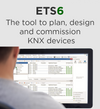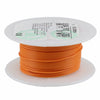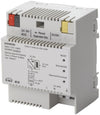- Your one stop shop for KNX devices in the USA 🇺🇸
- (+1) 786 956 6821
- support@knxsupply.com
- Store Location
- Sign in or Register
- Home
-
Categories
- System Devices
- Switching/Shutter Actuators
- Dimming Actuators
- HVAC
- Binary Inputs
- Keypads
- Gateways
- Enclosures and Boxes
- Occupancy Sensors
- Visualization Systems and Touch Panels
- Weather Sensors
- Drivers and ECGs
- Special Sensors
- HVAC
- Accessories
- Cable
- Expert Picks
- KNX Certified Training
- Newest Products
- Best Selling Products
Brands
- Articles
- Contact Us
- Home
- All Collections
- weinzierl
weinzierl
KNX Module for Raspberry Pi.
Application area
The KNX BAOS Module 838 kBerry is an extension board for the Raspberry PI® single-board computer.
It can be plugged directly on the Raspberry board and serves as a serial interface to KNX.
BAOS stands for “Bus Access and Object Server”.
So the module allows the access to the KNX bus on telegram level (KNX Link Layer) as well as on data point level (KNX Application Layer).
The connection between application and KNX BAOS Module is established via a UART connection (FT1.2 framing).
For a quick start a generic ETS® entry with 1000 group objects is available.
Individual ETS entries can be created as well.
The KNX BAOS Module 838 is powered via the bus and provides galvanic isolation.
The firmware of the KNX BAOS Module 838 is fully compatible with the KNX BAOS Module 830.
Gateway between KNX DMX512.
Application area
The KNX DMX Gateway 544 is a compact gateway between KNX and DMX512 (protocol for lighting control) with up to 64 freely configurable channels.
In master mode, the device allows convenient control of DMX luminaires, for example with KNX push-buttons.
Up to 64 dimming channels or up to 8 RGB/RGBW channels are available.
Several subsets of DMX512 addresses can be assigned to each channel.
The dimming channels enable dimming of one or more DMX devices via KNX.
In addition, 4 sequencers are available in the gateway to carry out more complex tasks.
In slave mode KNX actuators can be controlled by DMX.
For example, the room lighting, which is part of the KNX installation, can be controlled via a DMX lighting control panel.
Binary input with 4 channels to control lights, shutter etc.
Installation Instructions
- The device may be used for permanent interior installations in dry locations or within distribution boards with DIN rail.
Binary input with 4 channels to control lights, shutter etc. Inputs suitable for dry contacts.
Application area
The KNX IO 411 (4Ii) is a compact binary input with 4 channels to control lights, shutter etc.
With conventional switches or contacts.
Inputs are designed for dry contacts.
Using as impulse counter is possible as well.
It can be used to connect energy meters with S0 output or anemometers.
Two push buttons and three LEDs allow a local operation and a visualization of the device state.
In addition to the input channels the device includes 16 independent functions for logic or timer control.
Switching actuator with 2 outputs.
Application area
The KNX IO 510.1 secure (2O) is a compact switching actuator with 2 bi-stable relay outputs.
The actuator provides the function for universal outputs including scene control, timer, staircase lightning and to control heating valves (PWM for thermoelectric valve drives).
Two push buttons and three LEDs allow a local operation and a visualization of the device state.
In addition to the output channels the device includes 16 independent functions for logic or timer control.
The device supports KNX Data Security.
Switching actuator with 1 output and 2 binary inputs.
Application area
The KNX IO 511.1 secure (1O2I) is a compact switching actuator with 1 bi-stable output and 2 binary inputs.
The actuator provides the function for universal outputs including scene control, timer, staircase lighting and heating valves (PWM for thermoelectric valve drives).
The inputs can be connected to conventional switches with an external voltage of 12 to 230 V.
In ex-factory settings the inputs are connected internally to the actuator.
The actuator combined with input B1 serves as a latching relay.
Input B2 is used for zero crossing detection.
Blind actuator with 2 binary inputs.
Application area
The KNX IO 520 (1J2I) is a compact blind actuator with two additional binary inputs.
The actuator is used to control a blind, a shutter or a window drive.
The relay contacts are electrically interlocked.
The inputs can be connected to conventional switches with an external voltage of 12 to 230 V.
In the not configured state the binary inputs control the actuator channel.
Via commissioning the device using ETS® software the binary inputs can be used independently.
Two push buttons and three LEDs allow a local operation and a visualization of the device state.
In addition to the output and input channels the device includes 16 independent functions for logic or timer control.
Universal dimming actuator and binary inputs with 1 230V dimming output for lights and 2 binary inputs.
Application area
The KNX IO 530 (1D2I) is a compact 230 V dimmer with 1 dimming output and 2 binary inputs.
The dimming actuator can be used for dimmable electric lights supplied with 230 V mains.
To cover a wide range of usable electric lights the KNX IO 530 can operate with trailing or leading edge dimming.
Besides controlling the light by switching, rel.
Dimming and dimming value, several optional functions are integrated, including scenes, automatic, slumber function, staircase light and sequencer.
Switching actuator with 1 output and 2 binary inputs.
Application area
The KNX IO 532 (1D1O) is a compact combined dimming/switching actuator with 1 PWM dimming output for LEDs and 1 bi-stable relay output.
The dimming actuator can be used e.g. for LED panels or stripes.
Besides controlling the dimmer by switching, rel.
Dimming and dimming value, several optional functions are integrated, including scenes, automatic, slumber function or staircase light.
The switching actuator provides the function for universal outputs including scene control, timer, staircase lighting and heating valves (PWM for thermoelectric valve drives).
Two push buttons and three LEDs allow a local operation and a visualization of the device state.
In addition to the output channels the device includes 16 independent functions for logic or timer control.
KNX LED dimming actuator 4-fold with constant voltage.
Application area
The KNX IO 534 CV (4D) is a compact RGB / RGBW /Tunable White dimming actuator with 4 PWM outputs.
The dimming actuator can be used e.g. for LED panels or stripes with RGB / RGBW / Tunable White configuration or as 4 independent PWM dimmer channels.
Every configuration allows controlling the channel by switching, rel.
Dimming and dimming value.
Several comfort functions are integrated as well, including scenes, slumber fading, staircase light and sequencer.
KNX LED dimming actuator 4-fold with constant current.
Application area
The KNX IO 536 CC (4D) is a compact RGB / RGBW / Tunable White dimming actuator with 4 outputs (constant current).
The dimming actuator can be used e.g. for LED panels or stripes with RGB / RGBW / Tunable White configuration or as 4 independent dimmer channels.
Every configuration allows controlling the channel by switching, rel.
Dimming and dimming value.
Several comfort functions are integrated as well, including scenes, slumber fading, staircase light and sequencer.
Combined dimming/switching actuator with 1 dimming output for active electronic ballasts and 1 switching output.
Application area
The KNX IO 546.1 secure (1D1O) is a compact combined dimming/switching actuator with 1 dimming output for active electronic ballasts with a 0/1-10V interface and 1 bi-stable relay output.
The dimming actuator can be used for several active electronic ballasts e.g. for LED panels or stripes.
The configuration allows controlling the channel by switching, rel.
Dimming and dimming value.
Several comfort functions are integrated as well, including scenes, slumber fading, staircase light and sequencer.
The switching actuator provides the function for universal outputs including scene control, timer, staircase lighting and heating valves (PWM for thermoelectric valve drives).
Compact bus powered Interface and ObjectServer between LAN and KNX-Bus.
Application area
The KNX IP BAOS 773 is used as Interface for connecting to KNX both on telegram level (KNXnet/IP Tunneling) and on data point level (KNX Application Layer).
Clients can directly access Group Objects via either a Binary Protocol (over TCP/IP or UDP/IP) or via JSON (Java Script Object Notation) Web Services.
The device is configured with the ETS and supports up to 250 Group Objects.
10 simultaneous client connections are supported.
BAOS is an acronym for “Bus Access and Object Server”.
It is possible to connect to the KNX bus everywhere over LAN.
Bus connection over the internet with KNX IP BAOS 773 is also possible.
The device supports 5 simultaneous KNXnet/IP tunneling connections.
The buttons are for diagnostic purposes.
The LEDs indicate the operating status and communication errors on the bus.
Power is supplied via the KNX bus.
Compact bus powered Interface and ObjectServer between LAN and KNX-Bus.
Application area
The KNX IP BAOS 774 is used as Interface for connecting to KNX both on telegram level (KNXnet/IP Tunneling) and on data point level (KNX Application Layer).
Clients can directly access Group Objects via either a Binary Protocol (over TCP/IP or UDP/IP) or via JSON (Java Script Object Notation) Web Services.
The device is configured with the ETS and supports up to 1000 Group Objects.
10 simultaneous client connections are supported.
BAOS is an acronym for “Bus Access and Object Server”.
It is possible to connect to the KNX bus everywhere over LAN.
Bus connection over the internet with KNX IP BAOS 774 is also possible.
The device supports 5 simultaneous KNXnet/IP tunneling connections.
The buttons are for diagnostic purposes.
The LEDs indicate
the operating status and communication errors on the bus.
Power is supplied via the KNX bus
Interface and ObjectServer between LAN and KNX Bus.
Application area
The KNX IP BAOS 777 integrates a web server for the KNX installation.
This allows the visualization in a web browser on a PC or mobile device.
The email function allows the notification e.g. in case of an alarm.
The integration of a Date & Time Server (NTP) allows to obtain date and time automatically via the Internet
and to synchronize the KNX installation.
Extensive time functions offer a powerful KNX time switch with week function.
The configuration is done with the ETS software.
Compact bus powered interface between LAN/Ethernet and KNX bus.
Application area
The KNX IP Interface 731 is a compact interface used to connect a PC to the KNX network.
The connection is made through LAN (IP).
Power is supplied via the KNX bus.
The IP address can be obtained by a DHCP server or by manual configuration (ETS) respectively.
This device works according to the KNXnet/IP specification using the core, the device management and the tunneling part.
The buttons are for diagnostic purposes.
The LEDs indicate the operating status and communication errors on the bus.
Compact bus powered interface between LAN/Ethernet and KNX bus.
Application area
The KNX IP Interface 732 secure with its compact design has a width of only 1 module (18 mm) and is powered by the KNX bus.
The device is an interface between IP and KNX and can be used as programming interface for ETS®
Software.
You can access the KNX Bus from every point of your LAN.
Furthermore, the KNX IP Interface 732 secure allows you to program the KNX bus over the Internet.
The device supports KNX Security which can be enabled in ETS.
With its interface functionality (tunneling) KNX security prevents from unauthorized access.
The buttons and LEDs on the device allow a local diagnosis including the operating status and communication errors.
Wireless KNX IP interface.
Application area
The KNX IP Interface 740.1 wireless serves as a wireless interface to the KNX bus based on WLAN.
The device can be used as a programming interface for the ETS® and is a wireless alternative to USB or wired IP interfaces.
The bus access via WIFI allows the installer to move freely in the building with his laptop to a large extent.
The KNX IP Interface 740.1 wireless has an integrated WIFI access point to which the laptop can connect.
Alternatively, the device can be connected to an existing WIFI in client mode, the connection can be made via WPS (WIFI Protected Setup).
The device supports the security standard WPA2.
Power is supplied via the KNX bus.
The device works according to the KNXnet/IP specification.
It can be used with the ETS® from version 5.
KNX power supply 640 mA with KNX IP router.
Application area
The KNX IP LineMaster 762.1 secure combines the essential functions of a KNX bus line: KNX power supply with choke, KNX IP router and KNX IP interface.
In addition to the bus voltage the power supply offers an auxiliary voltage.
The KNX IP router in the KNX IP LineMaster 762.1 secure allows forwarding of telegrams between different lines through a LAN (IP) as a fast backbone.
Using the embedded KNX IP interface, the KNX line can be connected directly to a PC (e.g. by ETS).
The device supports KNX Security which can be enabled in ETS.
As secure router the device allows coupling of not secured communication on KNX TP to a secured IP
backbone.
Also for the interface functionality (tunneling) KNX Security prevents from unauthorized access.
The IP address can be obtained by a DHCP server or by manual configuration (ETS) respectively.
Compact bus powered Router between LAN/Ethernet and KNX bus.
Application area
The compact KNX IP Router 751 allows forwarding of telegrams between different lines through a LAN (IP) as a fast backbone.
In addition this device is suited to connect a PC to the KNX network e.g. for ETS programming.
The IP address can be obtained by a DHCP server or by manual configuration (ETS) respectively.
This device works according to the KNXnet/IP specification using the core, the device management, the tunneling and the routing part.
The KNX IP Router 751 has an extended filter table for main group 0..31 and is able to buffer up to 150 telegrams.
Power is supplied via the KNX bus.










































